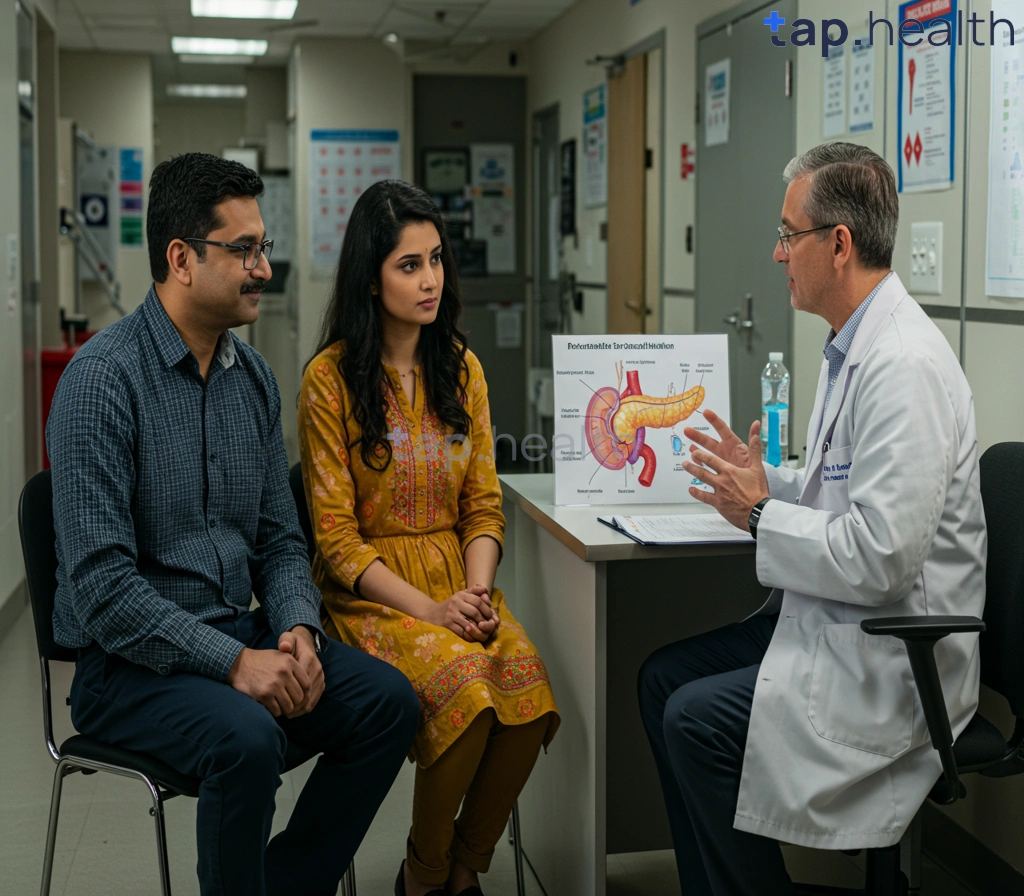Table of Contents
- Cataract Surgery After DME Treatment: A Guide
- Is Cataract Surgery Safe After Diabetic Macular Edema?
- Successful DME Management: When Can I Have Cataract Surgery?
- Diabetic Macular Edema & Cataracts: Understanding the Treatment Timeline
- Planning Cataract Surgery Following Diabetic Macular Edema Treatment
- Frequently Asked Questions
- References
Successfully managing diabetic macular edema (DME) is a significant victory in the ongoing battle against diabetes-related vision loss. But what happens next? Many patients wonder about the possibility of Cataract Surgery After Successful Diabetic Macular Edema Management. This blog post will explore the considerations and timing involved in cataract surgery following successful DME treatment, helping you understand the next steps in your journey towards clearer vision. We’ll address common concerns and provide insights to empower you in making informed decisions with your ophthalmologist. Let’s delve into the details and clarify this important stage of your eye health journey.
Cataract Surgery After DME Treatment: A Guide
Diabetic retinopathy, a common complication of diabetes, can lead to diabetic macular edema (DME), significantly impacting vision. Successfully managing DME is crucial, often paving the way for other necessary eye procedures like cataract surgery. Many individuals in India and tropical countries face this dual challenge, highlighting the importance of understanding the interplay between these conditions.
Timing is Key
The timing of cataract surgery after successful DME treatment is vital. Your ophthalmologist will carefully assess your DME control before recommending cataract surgery. Stable DME, meaning your vision isn’t deteriorating, is usually a prerequisite. Premature cataract surgery while DME is still active could potentially worsen the condition. Regular monitoring of your retinal health is essential throughout this process.
Regional Considerations
In India and other tropical countries, certain factors can influence the approach to managing both DME and cataracts. Access to advanced eye care and consistent follow-up appointments are crucial, especially given the high prevalence of diabetes in these regions. Furthermore, understanding the increased risk of complications associated with diabetes, such as foot ulcers – which affect nearly 15% of diabetics globally and carry a high amputation risk – emphasizes the importance of proactive eye health management. This is why How Often is Diabetic Eye Screening? is such an important question for those with diabetes.
Post-Surgery Care
Following cataract surgery, diligent adherence to your ophthalmologist’s instructions is vital. This includes regular check-ups to monitor both your cataract recovery and the continued stability of your DME. Maintaining healthy blood sugar levels is critical for long-term eye health. Any changes in your vision should be reported immediately to your doctor. Early detection and intervention are key to managing both conditions and preserving your vision. For more information on protecting your vision, check out our guide on How to Protect Your Vision with Diabetes: Essential Eye Care Tips.
Is Cataract Surgery Safe After Diabetic Macular Edema?
Diabetic macular edema (DME) and cataracts are common complications of diabetes, a disease significantly impacting populations in India and other tropical countries. Successfully managing DME is crucial before considering cataract surgery. The presence of DME can complicate cataract surgery, and the safety of the procedure depends on achieving stable DME control. Poorly managed DME can lead to unpredictable visual outcomes post-surgery.
Understanding the Risks
Cataract surgery itself doesn’t directly cause DME, but the presence of uncontrolled DME increases the risk of complications during and after cataract surgery. For example, existing retinal swelling can be exacerbated, delaying visual recovery. Furthermore, the procedure might necessitate a more complex approach, increasing the chances of potential postoperative complications. It is important to note that nearly 30% of individuals with diabetes develop diabetic nephropathy, a kidney complication that can further influence the patient’s overall health and suitability for surgery. Careful consideration of the patient’s overall health profile, including their kidney function, is crucial before proceeding.
Ensuring Safe Cataract Surgery
Optimal management of DME is paramount before cataract surgery. This typically involves meticulous control of blood sugar levels, regular ophthalmological check-ups, and potentially treatment with anti-VEGF injections or other therapies to reduce macular swelling. Once DME is stable and well-controlled, often indicated by improved visual acuity and reduced retinal thickness, cataract surgery can be considered with a significantly reduced risk of complications.
Finding the Right Specialist in India and Tropical Countries
Choosing an experienced ophthalmologist specializing in diabetic retinopathy and cataract surgery is essential. These specialists are well-equipped to assess the individual risk profile, manage DME effectively, and perform the cataract surgery with the best possible outcome. Consult a qualified eye doctor to discuss your specific situation and create a tailored treatment plan. Early detection and proactive management are key to preserving vision. It’s also important to understand how other health conditions might impact your overall health. For example, while not directly related to eye health, understanding the potential complications of other conditions, like those discussed in the article `Should a Diabetic Get a Tattoo?`, can help in making informed decisions about your overall well-being. This holistic approach is crucial for managing diabetes effectively.
Successful DME Management: When Can I Have Cataract Surgery?
Successfully managing diabetic macular edema (DME) is a crucial step before considering cataract surgery, especially in individuals from India and other tropical countries. The presence of DME, a complication of diabetes affecting the retina, can significantly impact the outcome of cataract surgery. Untreated or poorly controlled DME can lead to less-than-optimal visual results post-cataract surgery.
Understanding the Timing
The ideal time for cataract surgery after successful DME management depends on several factors. Your ophthalmologist will carefully assess your DME control, considering factors like visual acuity, retinal thickness, and the presence of any residual fluid. Generally, stable DME with good visual acuity for several months is a positive sign. Regular monitoring through optical coherence tomography (OCT) scans is essential to track your progress and determine readiness for cataract surgery. This is particularly important in regions with high diabetes prevalence like India, where early detection and management are crucial. Experiencing blurry vision? Learn more about when you should seek professional eye care for blurry vision.
Regional Considerations
In tropical climates prevalent in many parts of India, factors like high humidity and exposure to sunlight can impact both DME management and post-operative recovery from cataract surgery. Your doctor will consider these factors when determining the optimal timing for your procedure. Furthermore, access to advanced diagnostic tools and experienced ophthalmologists plays a vital role in ensuring successful DME management and subsequently, a smooth cataract surgery experience.
Next Steps
Once your ophthalmologist confirms your DME is well controlled and stable, they will schedule your cataract surgery. Remember that open communication with your doctor is key. Discussing your concerns and any questions regarding the procedure will ensure a successful outcome. Don’t hesitate to schedule a consultation with a qualified ophthalmologist to discuss your individual case and determine the best course of action for your eye health. Early intervention and proactive management are key to preserving vision. If you are experiencing dry eyes, it’s important to consult an eye care professional. Find out more about when you should consult an eye care professional for dry eyes.
Diabetic Macular Edema & Cataracts: Understanding the Treatment Timeline
Diabetic macular edema (DME) and cataracts are common eye complications significantly impacting the vision of millions, particularly in India and other tropical countries. A substantial portion of those affected are within the 20-64 age bracket, representing a significant workforce demographic, as highlighted by the International Diabetes Federation’s Diabetes Atlas data showing that 61% of people with diabetes fall within this age range. Understanding the treatment timeline for both conditions is crucial for preserving sight and maintaining quality of life.
Prioritizing DME Management
Managing DME effectively before cataract surgery is generally recommended. DME, a swelling of the macula caused by diabetes, can severely impact visual acuity. Successful DME treatment, which may involve injections or laser therapy, stabilizes vision and creates an optimal environment for subsequent cataract surgery. Attempting cataract surgery while DME remains uncontrolled could lead to unpredictable postoperative visual outcomes. The goal is to achieve the best possible visual acuity before proceeding with cataract removal.
Timing Cataract Surgery
Once DME is effectively managed and stable, the ophthalmologist will assess the cataract’s severity and determine the optimal time for surgery. This assessment considers factors such as the cataract’s impact on vision and the patient’s overall health. In many cases, cataract surgery can significantly improve vision, further enhancing the benefits of prior DME treatment. Regular monitoring post-DME treatment is crucial in assessing readiness for cataract surgery.
Regional Considerations in India & Tropical Countries
Access to specialized eye care and timely diagnosis can vary significantly across India and other tropical regions. Early detection and proactive management of both DME and cataracts are paramount. Seeking regular eye examinations, especially if you have diabetes, is vital. This proactive approach ensures timely intervention and improves the chances of achieving optimal visual outcomes. Don’t hesitate to consult with an ophthalmologist experienced in managing both DME and cataracts for personalized advice and a tailored treatment plan. Understanding how to manage diabetes as you age is also crucial, as it can significantly impact the likelihood of developing DME and cataracts. The link between diabetes and other health complications, such as tachycardia, also highlights the importance of proactive health management.
Planning Cataract Surgery Following Diabetic Macular Edema Treatment
Diabetic macular edema (DME) significantly impacts vision, and its management is crucial before considering cataract surgery. The interplay between DME and cataracts can complicate the surgical process, making careful planning essential. In India and other tropical countries, where diabetes prevalence is high, understanding this interplay is particularly important. The significant productivity loss associated with diabetes complications, estimated at 9-12%, underscores the need for timely and effective intervention.
Assessing Visual Stability
Before scheduling cataract surgery, your ophthalmologist will carefully assess the stability of your DME. This involves monitoring your visual acuity and retinal thickness using optical coherence tomography (OCT). Stable DME, meaning minimal fluctuation in thickness and vision, is generally preferred before cataract surgery. This ensures the best possible surgical outcome and minimizes post-operative complications. Your doctor will also review your diabetic management plan, ensuring blood glucose levels are well-controlled. Maintaining good blood sugar control is vital, and following a proper Diet Chart for Diabetic Patients to Control Diabetes can significantly help.
Surgical Approach Considerations
The surgical approach for cataract removal might be modified depending on the severity of your DME. For example, certain advanced techniques might be employed to minimize the risk of further macular edema after surgery. Regular monitoring and potential adjustments to your medication for DME might also be necessary post-operatively. In tropical climates, where high humidity and temperature can affect wound healing, careful post-operative care is vital.
Post-Operative Management in Tropical Climates
Post-operative care in tropical countries needs additional consideration. Maintaining consistent hydration and protection from intense sunlight are crucial. Regular follow-up appointments with your ophthalmologist are essential to monitor for any complications and to ensure optimal healing. Early identification and management of any issues can significantly improve your visual outcomes. Don’t hesitate to reach out to your doctor with any concerns. Proactive management of both DME and cataracts is vital for maintaining visual function and improving quality of life, particularly in regions with high rates of diabetes. Managing the emotional aspect of living with diabetes is also important. Consider exploring strategies for Addressing Emotional Eating in Diabetes.
Frequently Asked Questions on Cataract Surgery After Successful Diabetic Macular Edema Management
Q1. When is cataract surgery recommended after diabetic macular edema (DME) treatment?
Cataract surgery is recommended after your DME is stable. This means your vision and retinal thickness have been consistent for a period of time, as determined by your ophthalmologist. Stable DME minimizes complications and improves the chances of a successful outcome.
Q2. What is the role of DME management before cataract surgery?
Effective DME management is crucial before cataract surgery. This usually involves treatments like injections or laser therapy to reduce macular swelling. Keeping your blood sugar under control is also very important.
Q3. What are the potential challenges or risks of having cataract surgery after DME?
While successful, cataract surgery after DME carries some risks. The timing of the surgery is critical; if the DME is not well controlled, it can lead to complications. Close monitoring and adherence to your ophthalmologist’s instructions are essential.
Q4. How important is post-operative care after cataract surgery following DME treatment?
Post-operative care is extremely important. You must diligently follow your ophthalmologist’s instructions, attend all follow-up appointments, and maintain good blood sugar control to support long-term eye health and the success of the surgery.
Q5. What is the significance of early detection and proactive management for people with both DME and cataracts?
Early detection of both DME and cataracts is key to preserving vision. Proactive management, including regular eye exams and timely treatment of both conditions, significantly improves the chances of a positive outcome and helps prevent vision loss.
References
- Diabetic Retinopathy Classification from Retinal Images using Machine Learning Approaches: https://arxiv.org/pdf/2412.02265
- AI-Driven Diabetic Retinopathy Screening: Multicentric Validation of AIDRSS in India: https://arxiv.org/pdf/2501.05826





